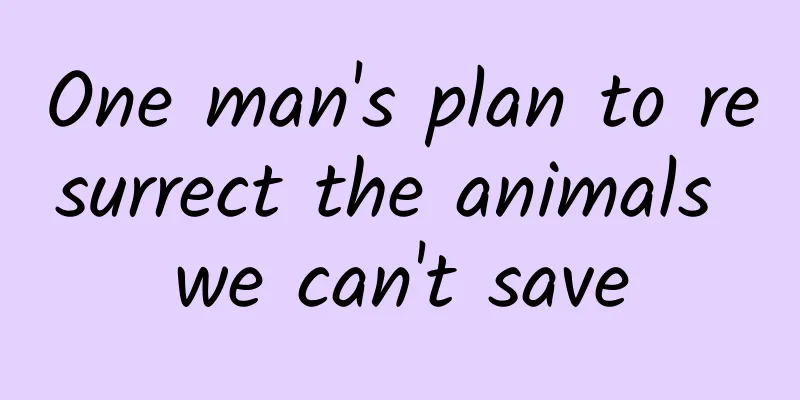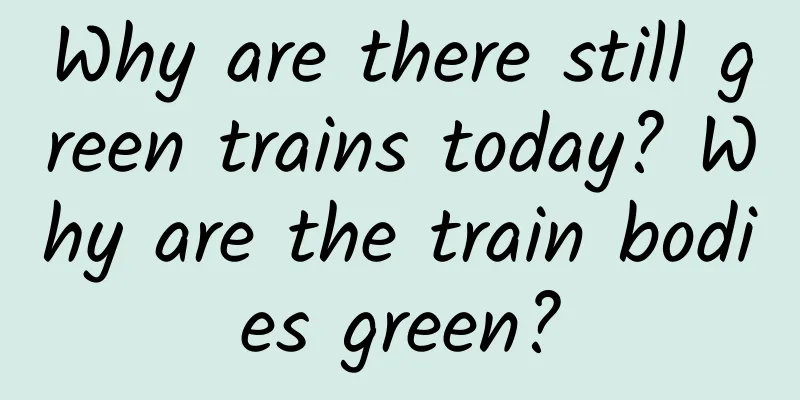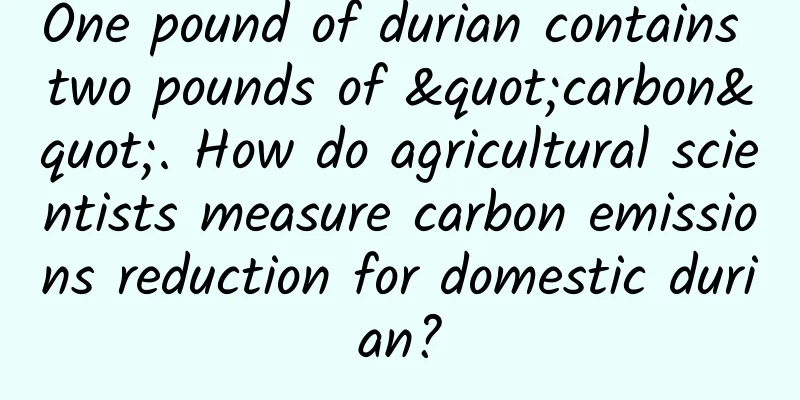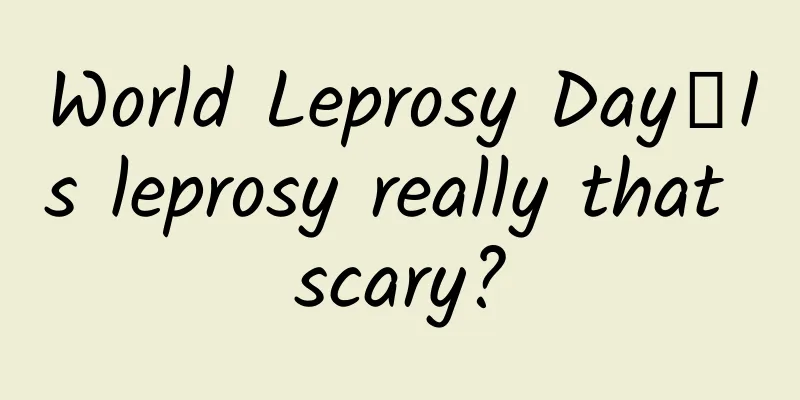One man's plan to resurrect the animals we can't save

|
Leviathan Press: Scientists estimate that 98% of the creatures that have ever existed on Earth are now extinct. Many experts warn us that the Earth is experiencing its sixth mass extinction as human activities destroy the living environment, overexploit natural resources, pollute and warm the planet. If this is the future we are really facing, we humans are probably to blame this time - even if the statement that "humans have extinct 60% of species on Earth" is not correct, we still need to consider the deep motivations for saving these endangered species. Some people say that humans are playing the role of God here, using technology to restore endangered species and even recreate extinct species. This seems good intuitively, but is the "hand of God" based on human moral guilt really necessary? After all, God does not need to save Himself, and humans, after all, are still trying to save themselves. At this moment, the helicopter that Tullis Matson is riding is over a game reserve in South Africa. The helicopter hovered over the gray land scattered with bushes, and in the clouds of dust that were kicked up, he could only make out a running bull elephant. The giant animal, full of power and fear, is on a rampage. Two darts containing tranquilizer have been shot into the elephant's flank, but it is fighting the effects of the anesthesia and refuses to fall. It runs towards a nearby waterhole in panic. A helicopter hovers in its path to stop it: if the elephant falls into the water, it will drown. The deadlock was soon broken, the elephants fell to their knees, flattened a patch of bushes, and a helicopter landed next to several trucks. What followed was a magical scene. A group of people hurriedly turned the elephant over to help it breathe more easily. It was originally lying on its stomach, but now it was lying on its side. Matson, 53, from Shropshire, England, dressed in khaki pants and sunglasses like a ranger, kneeled beside the elephant and placed its genitals into a device that looked like a giant condom. A conservationist inserted a probe that delivers a mild electric current to stimulate the elephant's prostate (and thus stimulate ejaculation). This method is called electro-sperm extraction. They started working, and after completing the semen collection, they packed up their equipment, climbed onto the helicopter and hovered in the air to observe until the elephant woke up and slowly walked away. Mattson sent me a video of the bizarre scene, filmed in October 2019, via WhatsApp. ‘It was one of the best experiences I’ve ever had,’ he said. The semen collected is brought back to Matson's farm for storage and later used in breeding programs. According to the Royal Society for the Prevention of Cruelty to Animals (RSPCA), elephants in captivity have high rates of stillbirth and calf mortality. With the endangered species facing extinction in the coming decades, conservationists and elephant sanctuaries are working together to collect semen samples from wild elephants and send them to sanctuaries elsewhere, which may improve the survival rate of offspring through artificial insemination. But Mattson is neither a ranger nor an elephant protector. He runs a racehorse artificial insemination company that serves his family farm in Shropshire, England. It collects and stores sperm from prize-winning stallions for use in breeding. He may not be the chosen one to save the animal kingdom, but that’s exactly what he’s aiming to be. Mattson has transferred his skills from horses to endangered animals and plans to build Europe's largest animal cell biobank. In December 2020, he founded the charity Nature's SAFE, which aims to collect 50 million genetic samples and put them into a "time freezer", using cryogenic tanks to preserve cells from some critically endangered species, including the Amur leopard, black rhino and mountain chicken frog. He is working with institutions such as Chester Zoo, the European Association of Zoos and Aquaria, and researchers at the University of Oxford, among others, in the hope of collecting and preserving sperm samples — as well as eggs and other tissues that could one day be used to boost populations of dwindling species and prevent them from going extinct. When we first spoke, his organization was only a month old and had already collected 30 specimens, including tamarin monkeys, mouse deer, Colombian spider monkeys, and panther chameleons. “We’re just a drop in the bucket,” he said. “We want to be like the Millennium Seed Bank, the seed bank for the animal kingdom.” The endangered motley tamarin. © TIM FLACH Conservationists have long been attracted to the idea that perhaps we could not only protect endangered species but also bring back animals that have gone extinct. For decades, they have been fighting a losing battle to undo the damage done to animals by human activity. In 2003, conservationists made history when, as scientists looked on in excitement, a goat gave birth to a Pyrenean ibex (known locally as a bucardo). Hunting had dwindled the Pyrenean ibex population for 200 years until only one remained. The last, Celia, was killed by a falling tree three years ago. But a team at the Centre for Research and Technology in Agroecosystems Nutrients in Aragon, Spain, led by scientist José Folch Pera, has brought the extinct animal back to life for the first time. Folch-Pera and his team froze skin cells from the ears of the last Pyrenean ibex when it died in liquid nitrogen. They later thawed the sample, cleared the DNA from 208 domestic goat eggs, and replaced them with DNA from the sample cells. The eggs were then transferred into surrogate mothers, another subspecies of the Spanish ibex, a cross between a mountain goat and a wild goat. Although the chances of conception were low, with only seven goats becoming pregnant, a Pyrenean goat was finally born. The victory was short-lived. The Pyrenean ibex was born by caesarean section and died of respiratory problems only about seven minutes later. An autopsy showed that the lamb had abnormal lungs, although other organs appeared normal. Now, this species may become a special species that has experienced extinction twice for the first time. The resurrection failed, but the scientists confirmed a simple hypothesis: frozen cells of extinct animals have the potential to be used to revive the species. Folch Pera mentioned in a 2009 paper on cloning, "Our current work, to some extent, encourages the storage of tissues and cells of all endangered species or species that meet the requirements, because they may be of great use in future species conservation based on cloning." In 2019, the United Nations released a report saying that 1 million species of animals and plants will disappear in the next few decades. Many species, such as black rhinos, Sumatran orangutans and Sunda tigers, have been caught in an extinction spiral - when there are very few existing individuals, the diversity of the gene pool is extremely limited, and only high inbreeding can be selected. These species have a lower survival rate and are more likely to gradually go extinct. One of the few ways to break this extinction spiral is to introduce DNA that has long disappeared from the gene pool - the DNA of ancestors who have long died. “To halt or reverse the decline of existing species, we need a variety of approaches, and biobanking is one of them,” says Christina Hvilsom, a conservation geneticist at Copenhagen Zoo and a member of the European Association of Zoos and Aquariums’ expert group on conservation genetics. Extracted animal cell samples are placed in a solvent in preparation for freezing. © SEBASTIAN NEVOLS Mattson is tall and walks briskly in three-quarter sweatpants even when he's wearing a garish lab coat. He got into artificial insemination because he was "at the right place and time," he says. He dropped out of school at 16 and dove into the horse racing industry, first as a jockey. He then had setbacks in amateur jumping and racehorse breeding before an accident that killed a mare led him to turn to artificial insemination. For more than 30 years, he has focused on horse breeding, and later helped people who lost their beloved pets clone their pets. In 2018, he attended a conference in the United States and reached a partnership with cloning company Viagen, which made it easier to ship frozen tissues from Europe, so he had another idea. "I thought, if I can revive cats, dogs and horses, why can't I help revive rare species?" He said that when he first approached Chester Zoo with his idea, they "didn't throw me out the door" but were not interested in the idea of cloning animals for conservation. "They said no, it's like a Frankenstein job, you have to be aware of the boundaries that you can't cross. But now it's completely different." Sue Walker, head of science at Chester Zoo and co-founder of Nature's Vault, said that in the past, zoos didn't want to be associated with cloning. Cloning individual animals is expensive, has a high failure rate, and cloned animals are likely to suffer from high stress levels or die young. It is much better to focus on saving species that are caught in the extinction vortex by increasing populations and protecting habitats. However, time is running out and the chances of survival for some species are becoming increasingly low. In extreme cases, artificial insemination and cloning may be the best or last option. On a cold March morning, Mattson showed me around the farm in Whitchurch, Shropshire. On the first floor of the main building were freezing barrels where cell samples were stored. The smaller ones looked like milk churns; the two larger ones resembled giant dye vats. Mattson walked up the steps and opened one, and a white mist billowed out as the steam cooled. Inside, in specially designed compartments, lay thousands of tiny test tubes shaped like cocktail straws, each containing the DNA of a racehorse. He pointed to a large cryogenic tank and said, "This is liquid nitrogen, I think it's -196 degrees Celsius. It keeps everything alive." In order to preserve cells, Mattson's team mixed the cells with cryoprotectants, which can protect physiological tissues from frostbite. In Mattson's words, it is antifreeze. Last year, his company exported animal semen worth about 60,000 pounds to 21 countries. In the next room, there is a dedicated liquid nitrogen storage tank: a yellow barrel the size of a bar stool that currently holds far fewer samples than the horse semen barrels. "We definitely need more space," Mattson said. "We are in a race against time. In theory, we need 50 different samples of each species to keep up with demand." Collecting at least 50 samples would provide enough genetic diversity for scientists to make meaningful changes for endangered species; if you clone multiple animals from the same sample, they would be genetically identical, which would not increase the number of species that can reproduce on their own. After the tour of the lab, Mattson said he wanted to show me the "source of income." He led me to a large, covered space. To the right was what looked like a large, square vault, tilted at an angle. To the back were two stables: one with a fairly quiet black mare, the other empty. Through the barn door on the far side, I see assistant groundskeeper Josh Steer and stallion keepers Teresa Hayley and Emily Coombes, with a chestnut stallion named Clippy. Coombes is holding what looks like a giant brown rubber condom. The technical term for this is a "horse vagina." Steele controlled the stallion while Haley narrated the hilarious scene that followed. “He’s hesitating,” Haley said. We waited in silence, the fake vagina dripping onto the concrete. There was little dignity in this scene. Clippy hissed and stamped his feet. Hailey said, "Think about it." Her voice echoed in the cold wind, "Think about it," a brief pause, "Think about it." "This is the hookup phase," Mattson joked. "They're just meeting each other for the first time, so they might need a few drinks at first." When Clippy made up his mind to take the next step in full view of everyone, everyone acted quickly. Combs cleaned the horse's penis with a cloth and bucket to prevent bacteria from contaminating the sample. Then they led it to the fake horse, applied the fake vagina, and after a few thrusts, the job was done. It may not be glamorous, but this rather primitive trickery is the safest way to obtain sperm so it can be sold to people who want high-performance racehorses. Compared to what happens to elephants in South Africa, which is sometimes the only way to obtain genetic material from creatures in the wild, it’s a bit more civilized. It's a bit of an odd job, Steele admits. Mattson in the Nature Vault laboratory. Most of the samples in the Nature’s Vault tanks were stored by people who never saw Mattson’s team in person—they died before they reached Mattson’s lab. The sperm extraction method used for horses or elephants cannot be used on all animals: such as the Thai hog-nosed bat, which is the smallest mammal in the world, about 3 cm long; and the Antarctic blue whale, which weighs about 180 tons. What’s holding back energetic conservationists from expanding the gene pool of endangered species is not only organizational problems but also widely varying rules and regulations, such as the Royal Veterinary College’s code of ethics, which prohibits veterinarians from obtaining DNA samples from endangered animals in captivity or after the animal has died, except for legitimate reasons such as medical examinations. After the animals die, Chester Park sends their samples to Mattson's team 40 kilometers south for immediate storage in liquid nitrogen tanks. Walker said: "You might imagine an ambulance speeding past on the fast lane with sirens blaring. It's actually much less exaggerated." When animals are dying, they are cared for by zoo zoologists, who deal with animal health issues every day. They perform the standard surgical procedures to remove testicles or ovaries, as well as tissue samples. Then they call Mattson and his team to take the samples. That's why there's a small, black thing that looks like an ear on the lab bench at Matteson's farm, along with two bat testicles the size of an olive pit. Chester Zoo's Seba's short-tailed leaf-nosed bats normally live in the "fruit bat forest", and visitors can feed them as part of a £56 "experience". Although the bat is not currently listed as endangered, no animal is safe because diversity is at a tipping point worldwide. The owner of the testicles died of natural causes, but his genes will live on. The first thing Lucy Morgan, science adviser for Nature's Vault, does is shave the ears. "The ears are, in a way, lifelong, and the cells in the ears are constantly being regenerated," she says. "So if you want to pick a sample that you want to culture in the future, the ears are perfect for that." She placed the ear in a solution of chlorhexidine to disinfect it and timed it. After two minutes, she placed the ear in a petri dish and cut it into pieces the size of chocolate chips. Using forceps, she placed them in a cryovial filled with liquid nitrogen. The two tiny testicles would be preserved intact. They would not extract the semen from them—they usually cannot preserve them with conventional methods for animals that are too small. Tissues, testicles or ovaries are safely pipetted into cryovials or straws and stored in freezers for possible future thawing for use in zoo or wildlife breeding programs. For animals whose anatomy makes artificial insemination with sperm or eggs impossible, samples may be stored for decades. Right now, all of Nature's Vault's samples are stored in one place, but they aim to set up a branch so tissues can be stored in different locations to reduce storage risks. Semen samples frozen in liquid nitrogen and stored in straws. Mattson's plan seems ambitious, but it is not unprecedented. 8,000 kilometers away, the San Diego Zoo in California has been running a biobank project since the 1970s, preserving more than 10,000 samples of living cells, germ cells and embryos. The bank, called the "Frozen Zoo," has hatched chicks of several pheasant species and witnessed frozen cat oocytes (cells that can form egg cells) mature and form late-stage embryos after in vitro fertilization. In 2020, conservationists in San Diego achieved another great feat when they successfully cloned a black-footed ferret from an animal that had died 30 years earlier. Born on December 10 at a research facility in Colorado, the sleek ferret, named Elizabeth Ann by researchers, is an exact replica of Willa, a ferret that died in 1988. The population was considered endangered in the 1980s, but a breeding program has helped the population grow to 6,000. The problem, though, is that the ferrets that exist today are very closely related. Ryan Phelan, executive director of Revive & Rebuild, a nonprofit focused on cloning, said: "Advanced reproductive techniques, like cloning, allow us to save animal populations and restore some of the diversity that would otherwise be lost over time." In a similar vein, there are tissue sample bank projects for academic research. They are rushing to collect as many samples as possible—not to restore animal populations, but mainly for future research. Their work is pragmatic: if we can't save the animals, then at least we have enough material to study before they disappear. Such collections include the Ambrose Monell Cryo Collection at the American Museum of Natural History, whose cryo-tissue lab can preserve up to a million specimens and currently stores butterflies, frog feet, whale skin and crocodile hide in liquid nitrogen tanks. The UK also has a similar sample bank, CryoArks, which is the UK's first national animal biological sample bank for genetic and genomic research of animal species. The CryoArks has three freezing bases: one at the Natural History Museum, one at the National Museum of Scotland, and one at the Edinburgh Zoo. Two other biobanks, the European Association of Zoos and Aquariums and FrozenArk, are also collaborating. "It means we don't have to go out into the wild to collect samples of animals," said Michael Bruford, principal investigator and director of FrozenArk. "That has a lot of advantages, not just the least intrusiveness, but also logistical convenience. But the reality is that the samples we have represent too many species that are extinct. They no longer exist." Fortunately, the "Frozen Ark"'s huge sample library was established earlier than the San Diego Zoo and the "Nature's Vault": this means people have more opportunities to study animals that became extinct earlier and unlock valuable information about ecosystems and long-lost habitats. Wilsom said that the Nature Vault is not just about extracting DNA for veterinary medicine or research, it has "taken it to the next level" and is focusing on cell lines and germ cells for artificial reproduction. "Their work gives more meaning to the biobank. What is being done now, and what will be achieved in the next few years, is that these cell lines can be converted into pluripotent stem cells (universal cells that can give rise to any type of cell or tissue), which can differentiate into germ cells, so it is possible to create new animals." Bradley stressed the need to ensure that the genetic material stored is not just from a small number of animals in captivity, but also to ensure that there is sufficient diversity in the gene pool. "If we count the cryopreservation institutions around the world, people have the ability to store millions of samples. But the question is not how many samples we can store, but where these samples come from and whether we can use them properly," he said. "In a sense, this is the role of cryopreservation, because researchers and conservationists can see what samples are available and choose the best strategy." But there are still gaps in the collection, which Bradley calls "mistakes of the past." Less adorable, less aesthetically pleasing animals are often left out of collections because they've been forgotten or are harder to preserve. Most of these gaps are invertebrates, like earthworms. "Whether they're the most charismatic animals on Earth or not, they're the most important creatures in the ecosystem because of their contributions, and yet there are very few biological samples of them," he says. This is a cloned horse, made from cells from a racehorse that died in 2008. © SEBASTIAN NEVOLSAT At the beginning of one of the Jurassic Park movies, before the dinosaurs start eating people, Dr. Ian Malcolm (Jeff Goldblum), in a leather jacket, criticizes the famous theme park owner John Hammond (Sir Richard Attenborough) for his ethics: "You scientists are obsessed with whether you can do it. They don't stop to think whether you should do it." This is a very pertinent point. If we can bring back creatures that have been gone for decades, then it makes sense to bring back creatures that died hundreds of years ago, like saber-toothed tigers, dodos, woolly mammoths, and even Tyrannosaurus Rex. Japanese geneticist Teruhiko Wakayama has successfully cloned new cells using mouse cells that had been frozen for 16 years. This brings more hope for the revival of long-extinct species. But it is not easy to revive mammoths and dodos. Although their bodies are frozen, their DNA will gradually become inactive over time, so we lack enough genetic information to revive healthy new individuals. © The Economic Times However, last year scientists published a nearly complete genome of the woolly mammoth, an animal that has been extinct for about 10,000 years. This has led people to speculate that it is possible to artificially synthesize the DNA of the woolly mammoth. In March 2021, the research team that cloned the black-footed ferret established the Woolly Mammoth Revival Fellowship in the laboratory of George Church, a famous geneticist at Harvard Medical School, to explore the science of resurrecting the woolly mammoth. In a phone chat in March, I asked Church about the ethical dilemma of resurrecting extinct animals. Why clone extinct animals instead of saving species that are not yet extinct? “It’s usually not one or the other,” he replies. “You have species that are extinct in the wild and extinct in zoos, or extinct in captivity. You just push that back a little bit so they can be successful in the wild.” He cites the example of bison, a species that was on the brink of extinction in the 19th century but has now recovered to about 12,000 individuals. “So I think our focus is really on increasing the diversity of what’s already there.” Church's woolly mammoth project is not aimed at resurrecting extinct species. He explained: "It aims to give the diversity of extinct species to modern species to help existing species and the ecosystems in which they exist." By editing oligonucleotides (independently synthesized single-stranded DNA sequences containing 40 to 350 bases) associated with certain traits and inserting ancient woolly mammoth DNA into the Asian elephant genome, Church plans to use CRISPR gene editing technology to create an elephant that is cold-resistant and virus-resistant, and whose tusks can also protect against predators. "I really don't know of a project that's just for resurrecting extinct species that's not working to improve the diversity of modern species," he said. In addition to racing against time to preserve the DNA of endangered animals, he also needs to insert diversity directly into the animals' genes. For example, most of the frozen elephant cells that exist today were collected in the past decade, he said, but they can also be used as the basis for inserting ancient DNA, providing a more accurate DNA sequence from the species' ancestors. "So far, our record for the largest number of gene edits in a single living animal is 42, which is a pig called 'version 3.0'," Church said. This is not a big change for different species, but it is enough to produce very obvious different expressions of certain key genes. If scientists do not have enough animal samples of endangered species, this editing technology can help fill in the gaps in genetic information and may revive millions of species at a lower cost. In fact, you could make the resurrected species more diverse and healthier, Church said. “You could have diversity from different places, and diversity from different times. You could bring back two animals that would never have existed at the same time, that would have lived in different places and times and never met. That’s an interesting possibility.” Church doesn't think scientists should be prohibited from crossing a line, but warns that great care must be taken when releasing any species into the wild. He points to the goats that entered the Galapagos ecosystem, munching on vegetation, causing soil erosion, threatening rare plants and affecting native animals such as giant tortoises. The goats had to be removed. Wilsom believes that there is a clear distinction between cloning for conservation and cloning to bring back long-extinct species. "For me at least, there is a fine line between helping to increase the population of an endangered species and trying to bring back an animal like the mammoth that has long been extinct," she said. She believes we can – and should – restore habitats to repair damage caused by human activity, and she thinks cloning should only be used when we have no other choice. Matson, who lives in Shropshire, England, has a similar view. "I'm worried that people will become obsessed with things like Jurassic Park and forget the original intention of wanting to save existing animals," he said. "Now people's ambitions go beyond that." The Nature Vault follows the strict ethical procedures of zoos and has signed a memorandum of understanding to ensure that all partners are informed. All samples in the Nature Vault belong to the zoos, who will decide whether to use them in conservation or breeding projects, while the only samples that can be thawed by the Nature Vault are used only for routine testing to check that the storage conditions are appropriate. Currently, no stored samples are used in ongoing projects. As we toured the farm, we stopped in a large paddock, and Mattson gestured to a white horse named Mulka Jewel, who was born in 2011 and cloned from Jewel Twist, a famous show jumping horse who died in 2008. We watched the horse ambling and grazing until it spotted us and ran off. "The interesting thing is that this horse is exactly the same, cell by cell, but it's two inches shorter," Mattson said. Perhaps the mare that gave birth to the original horse was taller, or the gestation period was longer. Twenty years after the cloning of the Pyrenean goat and 25 years after Dolly the sheep, the field of genetics is still full of mysteries. By Natasha Bernal Translated by Yord Proofreader/Pharmacist Original article/www.wired.co.uk/article/natures-safe This article is based on the Creative Commons License (BY-NC) and is published by Yord on Leviathan The article only reflects the author's views and does not necessarily represent the position of Leviathan |
<<: This deafening behavior is probably something we use every day!
Recommend
Burning money, poaching anchors, and high bandwidth fees, how do live streaming platforms achieve commercial monetization?
Today, let’s talk about how the live streaming in...
In addition to SEM promotion, why do we need to invest in native advertising?
The key differences between native advertising an...
Why do WeChat payment accounts require real names and have change limits? Official Science
Compared with paper money, online payment does no...
Alipay's practical Spring Festival functions: write blessing characters, check epidemic situation, and watch New Year short films
The Spring Festival is approaching, but the origi...
As a supervisor leading new people, how does a SEM bidding supervisor lead new SEM people?
This depends on the supervisor's ability to e...
Two major benefits of frequent mergers between the top two in the Internet industry
Judging from the four O2O mergers that occurred t...
The legend of "Jingwei filling the sea" has become a reality? Let's see how to create land out of nothing on the sea
In the Netherlands, there is a saying that goes, ...
APP user operation: How to prevent users from changing their minds?
Preventing user churn and improving retention and...
How harmful is it to wear headphones for a long time? Teach you how to use headphones correctly
Listening to music, watching TV shows, playing ga...
Stuffy nose? Your understanding of nasal congestion may be wrong...
Leviathan Press: I guess many people who have bee...
How can a small brand turn into a big brand?
In the past, if a small brand wanted to turn arou...
How should SEO novices do search engine optimization?
With the upgrade of search engine algorithms, the...
Tujia.com's big data precision marketing solution!
Tujia.com Big Data Precision Marketing Solution P...
Jam Hsiao endorses the brand, the zero-contact smart interactive SUV EX5-Z is launched, the concept car Maven makes a stunning debut, and WM Motor brand is fully renewed
[May 10, 2020] Today, WM Motor launched an online...
You can choose quiet carriages on these trains! Here are some tips
Fuxing Intelligent EMU On the Beijing-Zhangjiakou...









